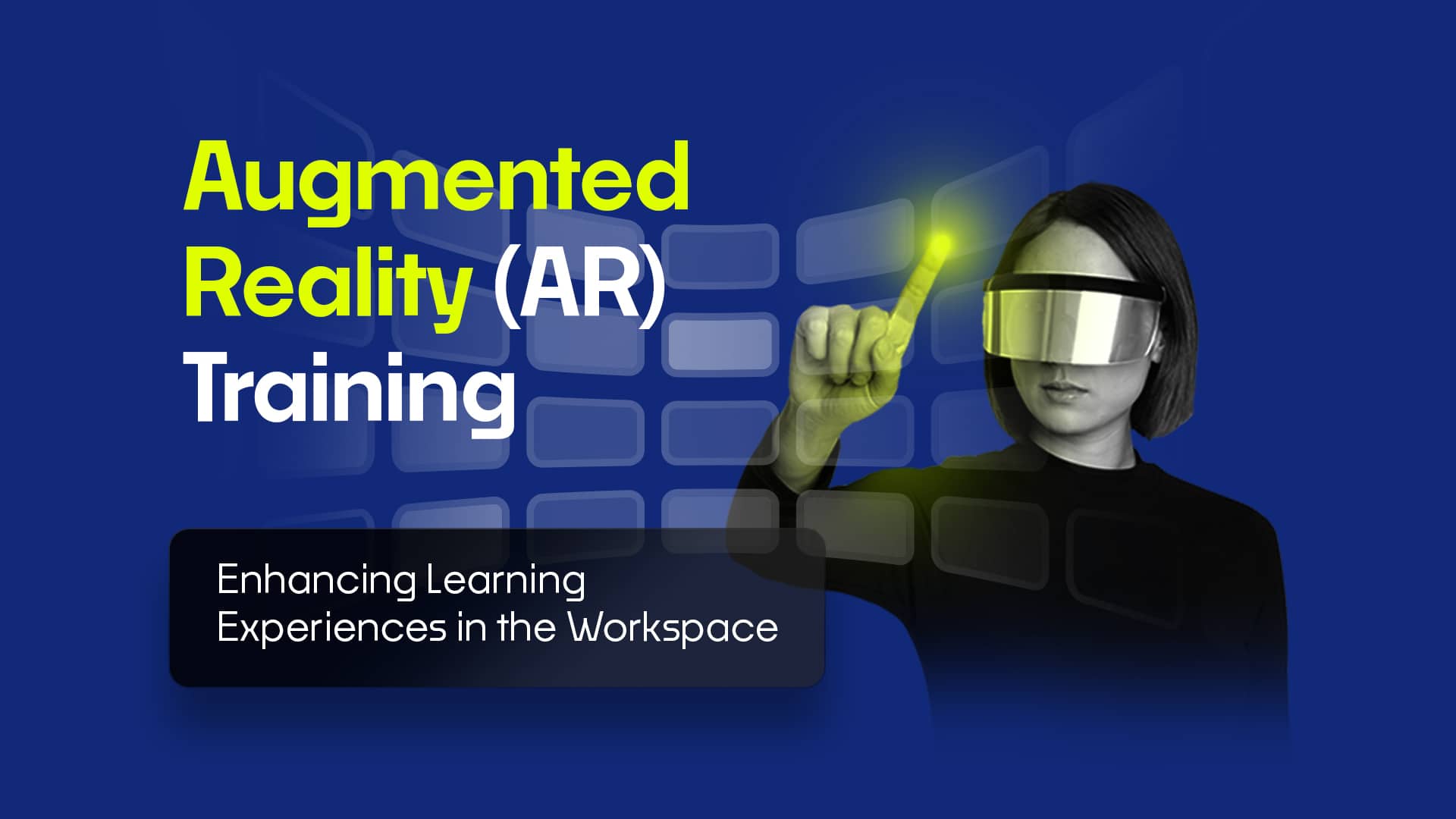In the rapidly evolving world of technology, Augmented Reality (AR) has emerged as a powerful tool for transforming learning experiences. By overlaying digital information onto the real world, AR technology through Augmented Reality offers a unique and interactive way to enhance training and development in the workplace.
In this blog post, we will delve into the concept of Augmented Reality training, explore its benefits, and discuss how organizations can leverage AR technology to create interactive and immersive learning experiences within the workspace.
- Understanding Augmented Reality (AR) Training:
Augmented Reality training involves the integration of digital content into the physical environment, providing learners with an enhanced and blended learning experience.
Using AR-enabled devices such as smartphones, tablets, or wearable devices, users can view and interact with virtual elements superimposed onto their real-world surroundings. This interactive approach to training fosters engagement, knowledge retention, and practical application. - Benefits of Augmented Reality Training in the Workspace:
a) Enhanced Engagement: AR training captivates learners’ attention by delivering information in a visually appealing and interactive manner. The immersive nature of AR enables employees to actively participate and engage with the content, leading to increased motivation and knowledge absorption.
b) Real-Time Performance Support: AR technology provides on-the-spot guidance and support to employees, allowing them to access relevant information and instructions as they perform tasks. This immediate and contextual assistance improves productivity, reduces errors, and enhances performance.
c) Simulated Learning Scenarios: AR training can replicate realistic work scenarios, allowing employees to practice skills and decision-making in a safe and controlled environment. This simulation-based approach enhances confidence, competence, and critical thinking.
d) Remote Collaboration and Training: AR enables remote collaboration and training by overlaying virtual objects or instructions onto the physical workspace, enabling employees in different locations to work together, share knowledge, and receive real-time guidance.
e) Cost and Time Efficiency: AR training eliminates the need for expensive physical setups and reduces training time. Employees can access training modules conveniently, saving resources and ensuring consistent learning experiences.
- Applications of AR Training in the Workspace:
a) Skills Development: AR can be used to train employees in technical skills, such as equipment operation, troubleshooting, or assembly processes. The interactive nature of AR enables employees to practice hands-on tasks and receive immediate feedback.
b) Onboarding and Orientation: AR can enhance the onboarding process by providing virtual tours, introducing company policies, and showcasing workplace layouts. New employees can familiarize themselves with their surroundings and quickly adapt to the work environment.
c) Safety Training: AR can create immersive safety training experiences by overlaying virtual hazards or emergency scenarios onto the real workspace. This enables employees to practice safety protocols and emergency response in a realistic yet controlled setting.
d) Soft Skills Development: AR training can support the development of soft skills, such as communication, customer service, and leadership. Employees can engage in interactive role-playing exercises to practice and refine their interpersonal skills.
e) Product Visualization and Sales Training: AR technology can assist in product visualization, allowing employees to showcase virtual products, conduct virtual demonstrations, and provide detailed information to clients. This enhances sales training and customer engagement. - Implementing AR Training in the Workspace:
a) Assess Learning Needs: Identify areas within the organization where AR training can add value and address specific learning objectives.
b) Content Creation: Collaborate with subject matter experts and instructional designers to develop AR-enabled content that aligns with learning goals and objectives.
c) AR Device Selection: Choose suitable AR devices or platforms based on the specific training requirements and available resources.
d) Pilot Testing: Conduct pilot testing to gather feedback and evaluate the effectiveness of AR training. Use this feedback to refine and improve the content and delivery.
e) Integration and Support: Ensure seamless integration of AR technology with existing systems and provide technical support for employees using AR devices or applications.
f) Evaluation and Continuous Improvement: Continuously assess the impact and effectiveness of AR training through learner feedback, performance metrics, and business outcomes. Update and enhance the content as needed to ensure ongoing relevance and engagement.
Conclusion: Augmented Reality (AR) training is revolutionizing the way organizations approach learning and development in the workspace. By leveraging AR technology, organizations can create interactive and immersive learning experiences that enhance engagement, knowledge retention, and practical application of skills.
Whether it is skills development, onboarding, safety training, or soft skills enhancement, AR training offers endless possibilities for improving employee performance and driving business success. Embrace the power of Augmented Reality training and unlock the full potential of your workforce in the digital age.










